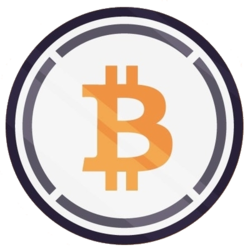Apple Inc. is preparing to finally launch a touch-screen version of its Mac computer, reversing course on a stance that dates back to co-founder Steve Jobs.
Apple's Shift in Strategy
For years, Apple has been known for its firm stance against adding touchscreens to its Mac lineup. The late Steve Jobs famously said that having a touchscreen on a Mac would be like trying to merge a toaster and a refrigerator. However, Bloomberg's recent report suggests that Apple is now changing its tune.
Instead of a traditional keyboard and trackpad, Apple's new MacBook Pro is rumored to feature a touch-based interface, similar to the Touch Bar found on current models but expanded to cover the entire keyboard area.
High-End Features
The forthcoming MacBook Pro is expected to boast a hole-punch screen design, a departure from the current lineup's thick bezels. This design choice is likely aimed at reducing the overall footprint of the laptop while maximizing screen real estate—a move that aligns with Apple's trend towards sleek and modern aesthetics.
In addition to the touch interface and updated screen design, the new MacBook Pro is also rumored to feature the latest high-end components, including Apple's custom silicon chips for enhanced performance and efficiency.
Competitive Edge
By embracing touch functionality on its Mac lineup, Apple may be looking to bridge the gap between its laptop and tablet offerings. This move could position Apple as a strong competitor in the hybrid device market, appealing to users who value versatility and productivity in a single device.
If the touch-enabled MacBook Pro proves successful, it could also give Apple a competitive edge over rivals like Microsoft, whose Surface devices have long offered touchscreen capabilities in a laptop form factor.
Rethinking User Experience
With the shift towards touch functionality, Apple is signaling a reevaluation of the user experience on its Mac lineup. By incorporating touch controls into the MacBook Pro, Apple is aiming to enhance user interaction and streamline workflows, catering to users who are accustomed to touch interfaces on smartphones and tablets.
This strategic pivot reflects Apple's commitment to adapting its product offerings to meet evolving consumer preferences and technological advancements in the computing industry.
Design and Innovation
Apple's decision to introduce a touch-enabled MacBook Pro represents a bold step towards innovation in the laptop market. By reimagining the traditional laptop form factor with a touch interface and a modern screen design, Apple is setting the stage for a new era of Mac computing that blends cutting-edge technology with intuitive usability.
As Apple continues to push the boundaries of design and functionality with its products, the touch-enabled MacBook Pro is poised to set a new benchmark for high-end laptops in terms of both performance and user experience.
Market Impact
The introduction of a touch-enabled MacBook Pro could have significant implications for Apple's market share and standing in the laptop segment. By offering a unique blend of touch functionality, premium design, and powerful hardware, Apple may attract a broader audience of users who value innovation and performance in their computing devices.
This move could also solidify Apple's position as a key player in the high-end laptop market, positioning the company as a leader in design and technology innovation.
Consumer Response
As the tech community eagerly anticipates the release of the touch-enabled MacBook Pro, consumer response to this new offering remains a point of interest. Apple enthusiasts and industry analysts alike are speculating on how the market will react to Apple's departure from its longstanding no-touchscreen policy.
While some users may welcome the addition of touch functionality to the MacBook Pro, others may remain skeptical about the practicality and utility of a touch interface on a traditional laptop. The coming months will reveal how consumers perceive and adopt this new feature from Apple.
If you have any questions, please don't hesitate to Contact Us
Back to Technology News















































